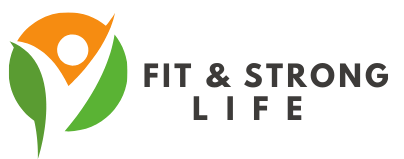Table of Contents
- Why Tracking Your Progress Matters
- Set Clear Goals
- Use a Fitness App
- Keep a Workout Journal
- Take Progress Photos
- Measure Your Body Metrics
- Monitor Your Nutrition
- Track Your Workouts
- Join a Fitness Community
- Regularly Review Your Progress
Why Tracking Your Progress Matters
Tracking your fitness progress is essential for staying motivated and achieving your goals. By keeping a record of your workouts and nutrition, you can gain insights into what strategies work best for you. Research indicates that individuals who actively track their fitness progress are more likely to remain committed and see results. This is particularly important in 2024 and 2025, where personalized fitness approaches and technology continue to evolve.
“Tracking progress not only enhances motivation but also provides a clearer understanding of what works for you.”
Set Clear Goals
Establishing SMART (Specific, Measurable, Achievable, Relevant, Time-bound) goals is crucial. Instead of vague aspirations like wanting to “be fit,” specify your target. For instance, “I want to run a 5K in under 30 minutes in 3 months.” This clarity not only helps you focus but also provides measurable benchmarks to gauge your progress.
Example of SMART Goals
| Goal Type | Example |
|---|---|
| Specific | I will run 3 times a week. |
| Measurable | I will lift 10 more pounds. |
| Achievable | I will lose 1 pound per week. |
| Relevant | I want to improve my endurance. |
| Time-bound | I will complete a 5K in 3 months. |
“Setting clear and specific goals can make all the difference in your fitness journey.”
Use a Fitness App
Fitness apps have transformed how we track our progress. Popular options like MyFitnessPal, Fitbit, and Strava allow users to log workouts, monitor nutrition, and visualize their progress over time. In 2024 and 2025, integrating wearable technology with these apps has become more seamless, allowing for real-time data collection and analysis.
Recommended Apps
“Utilizing technology can streamline your tracking process and enhance your insights.”
Keep a Workout Journal
Writing down your workouts can provide a unique perspective on your fitness journey. A workout journal allows you to reflect on your exercises, track your performance, and set future goals. Document details such as exercises, sets, reps, and how you felt during workouts, which can help identify patterns and successes.
“Journaling your workouts can reveal patterns and breakthroughs in your fitness journey.”
Take Progress Photos
Visual evidence of your progress can be incredibly motivating. Regularly taking photos allows you to see physical changes over time. Ensure consistency by using the same background and lighting for each session.
Tips for Taking Effective Progress Photos:
- Use natural light whenever possible.
- Maintain a consistent outfit for each photo.
- Capture front, side, and back views for a complete picture.
“Photos can provide a powerful visual reminder of how far you’ve come.”
Measure Your Body Metrics
Measuring body metrics provides a comprehensive view of your progress. Consider tracking:
- Weight
- Body Fat Percentage
- Muscle Mass
- Body Circumference Measurements (waist, hips, arms)
Using tools like smart scales or tape measures can help keep this data organized and accessible.
Example of Body Metrics Tracking Table
| Date | Weight | Body Fat % | Waist (inches) | Hips (inches) |
|---|---|---|---|---|
| 01/01/2024 | 150 lbs | 25% | 30 | 40 |
| 02/01/2024 | 148 lbs | 24% | 29.5 | 39.5 |
| 03/01/2024 | 145 lbs | 23% | 29 | 39 |
“Tracking body metrics gives a more holistic view of your fitness journey beyond just weight.”
Monitor Your Nutrition
Nutrition plays a pivotal role in fitness. Keeping a food diary or using nutritional tracking apps helps you stay aware of your eating habits. Aim for a balanced diet that aligns with your fitness goals—whether it’s losing weight, gaining muscle, or enhancing endurance. For more information, explore our guide on macronutrients for optimal fitness.
Key Nutritional Tracking Tips:
- Log all meals, including snacks.
- Monitor portion sizes and macronutrient ratios.
- Consider your hydration levels, as discussed in our article on hydration strategies.
“Nutrition is the fuel for your fitness journey; tracking it can lead to significant improvements.”
Track Your Workouts
Establish a structured workout plan and consistently track your sessions. Whether focusing on strength training, cardio, or flexibility, logging workouts helps you identify successful strategies. Use a spreadsheet or an app to record the type of exercise, duration, and intensity.
Sample Workout Log
| Date | Exercise | Duration | Intensity Level |
|---|---|---|---|
| 01/01/2024 | Running | 30 mins | Moderate |
| 01/02/2024 | Weightlifting | 45 mins | High |
| 01/03/2024 | Yoga | 60 mins | Low |
“Keeping a detailed log of your workouts can help you fine-tune your training approach.”
Join a Fitness Community
Being part of a fitness community can greatly enhance your motivation. Engage with local fitness classes, online forums, or social media groups to share progress, ask questions, and find support from those on similar journeys. This accountability can propel you towards your goals, as highlighted in our article on mental fitness.
Benefits of a Fitness Community:
- Motivation through shared experiences
- Accountability to stay on track
- Access to diverse resources and tips
“A supportive community can make a significant difference in your fitness motivation and accountability.”
Regularly Review Your Progress
Set aside time each month to review your progress. Evaluate your metrics, journal entries, and photos to see what’s working and what isn’t. This regular check-in not only keeps you accountable but also allows you to celebrate your achievements, no matter how small.
Questions to Ask Yourself During Progress Reviews:
- What goals have I completed?
- What obstacles have I encountered?
- How can I adjust my approach moving forward?
“Regular reviews of your progress can help you stay on track and adjust your goals as needed.”
Conclusion
Tracking your fitness progress effectively is essential for long-term success. By implementing these 10 proven methods, you’ll gain valuable insights into your journey and stay motivated to reach your goals. Remember, fitness is a marathon, not a sprint—embrace the process, celebrate your milestones, and keep pushing forward!
For additional insights into nutrition and fitness strategies, consider exploring our other resources, such as top pre-workout foods and post-workout nutrition tips. Happy tracking!




